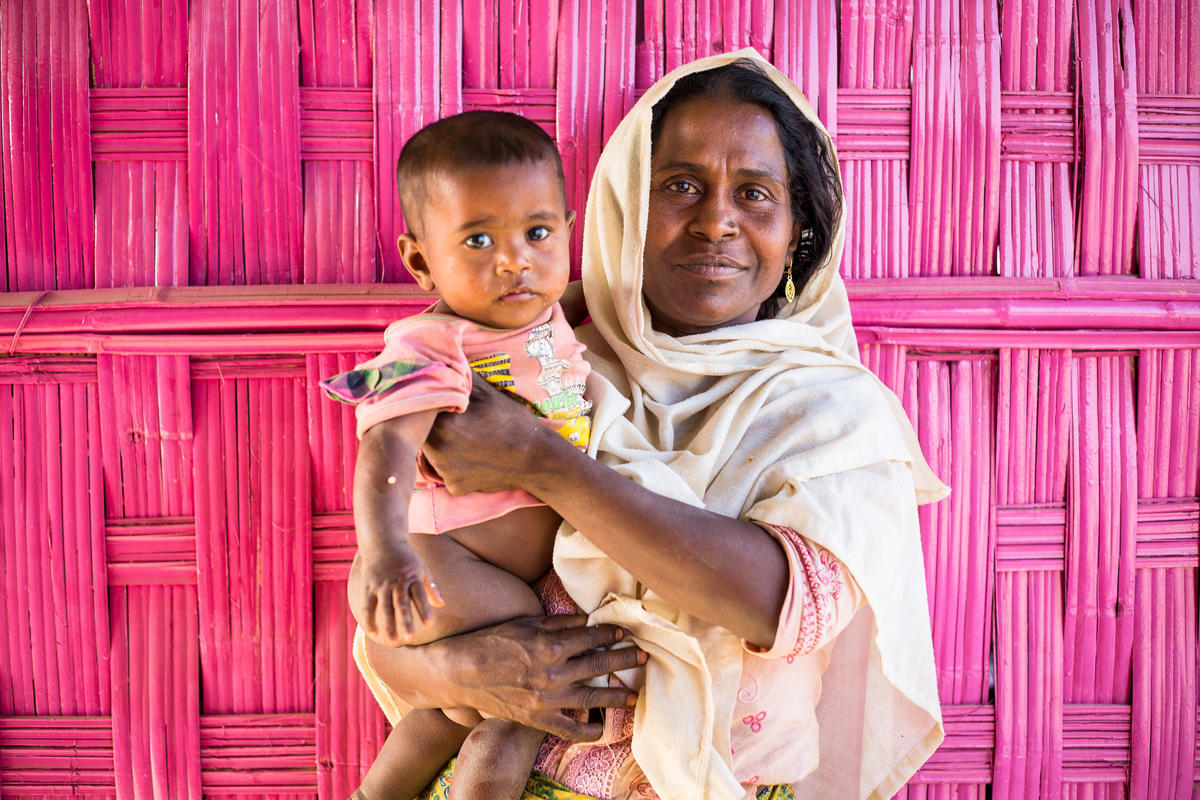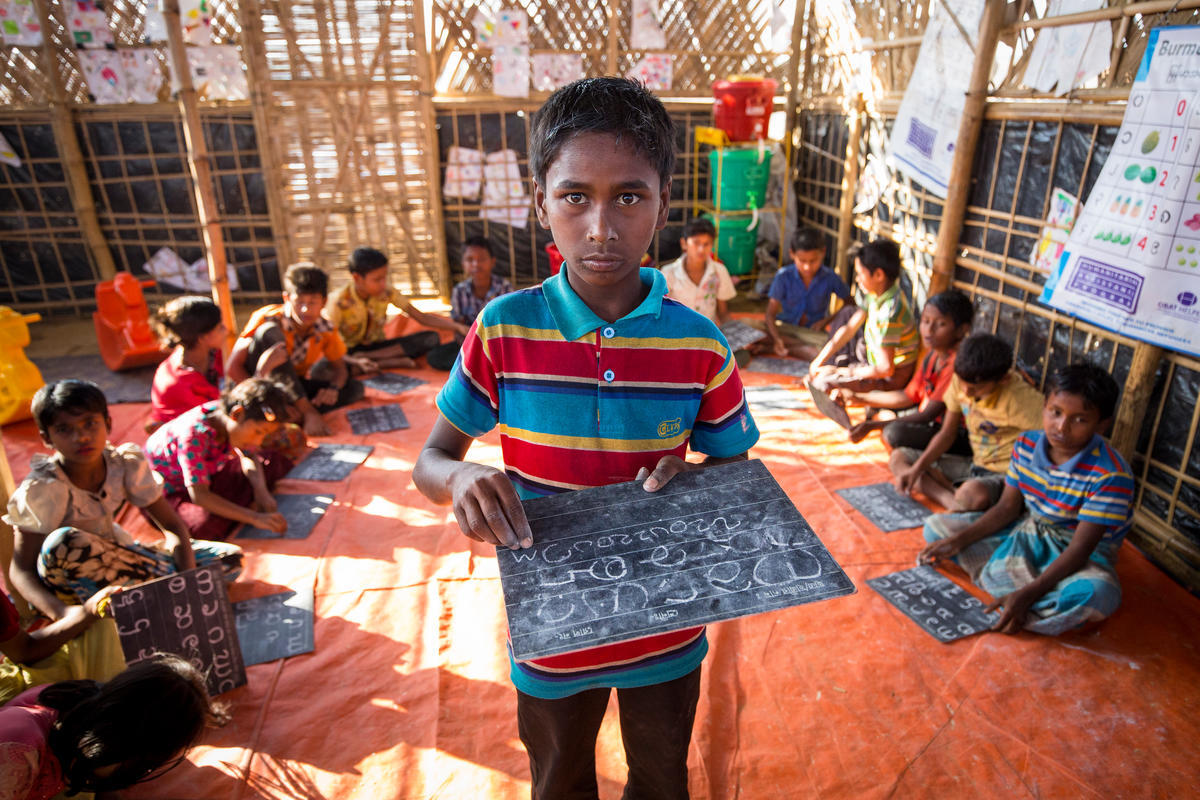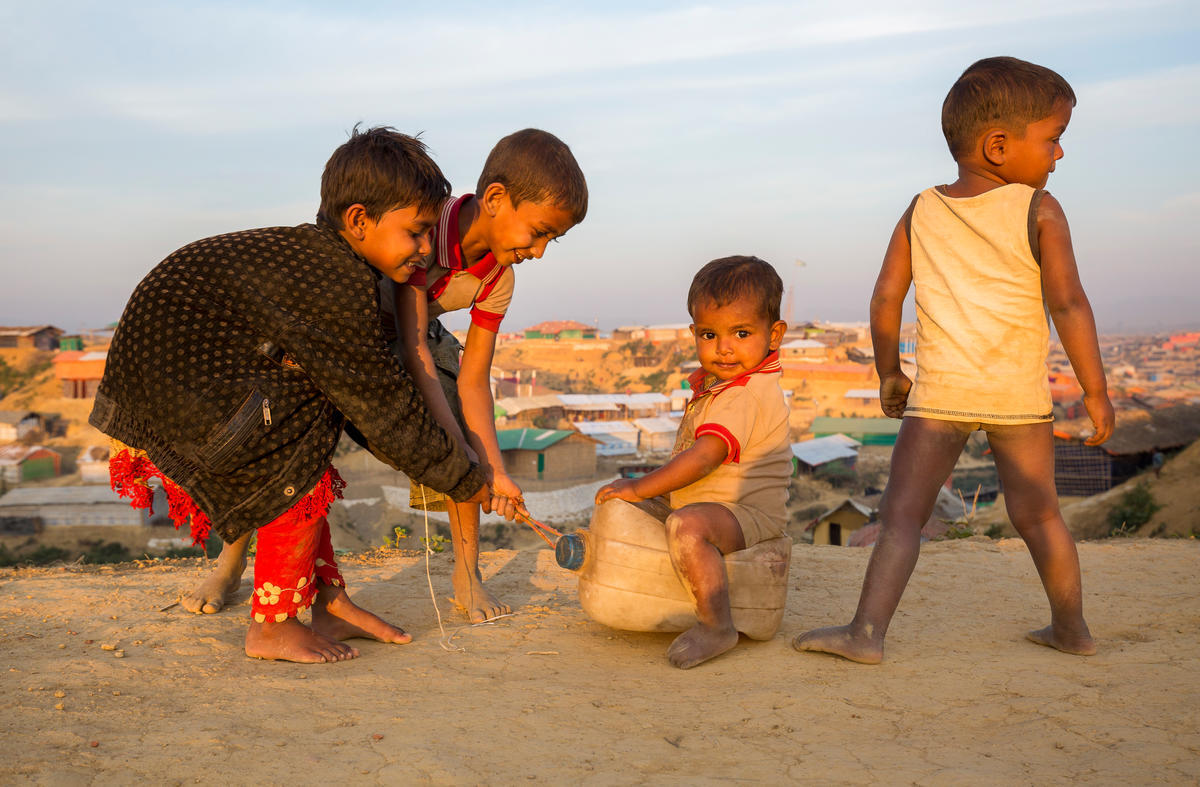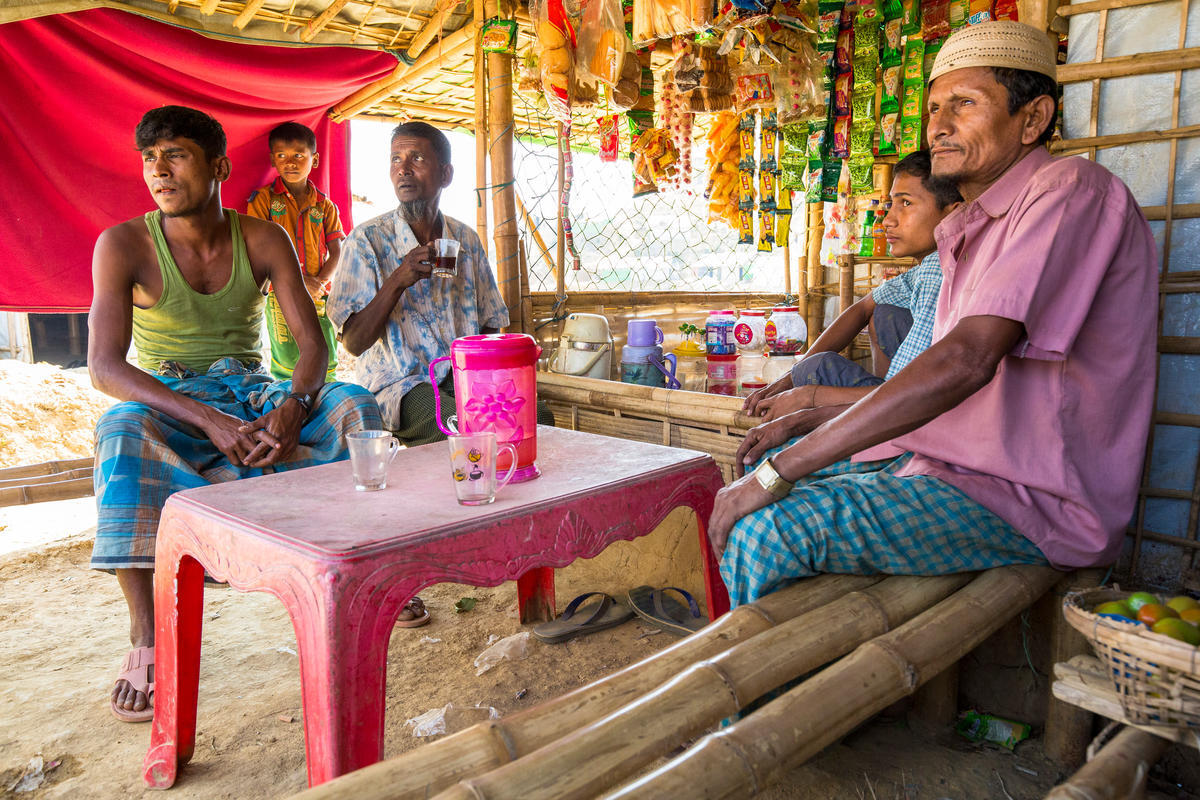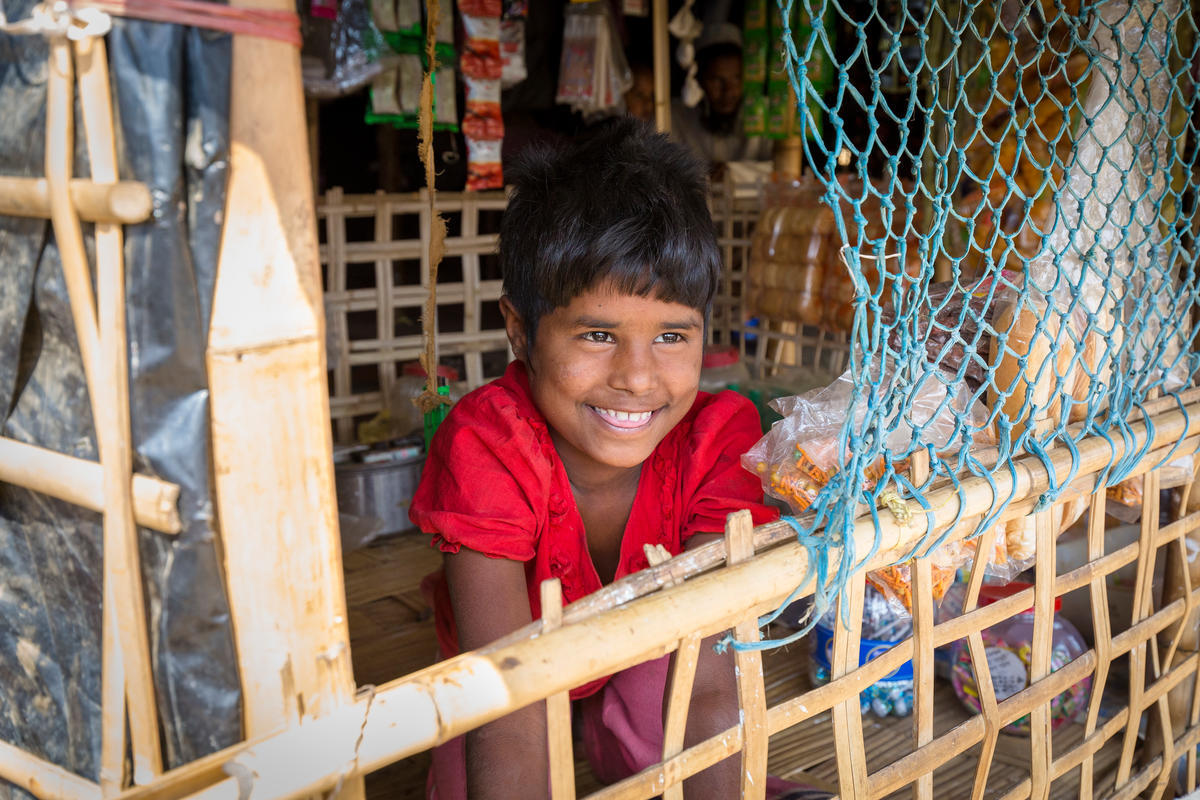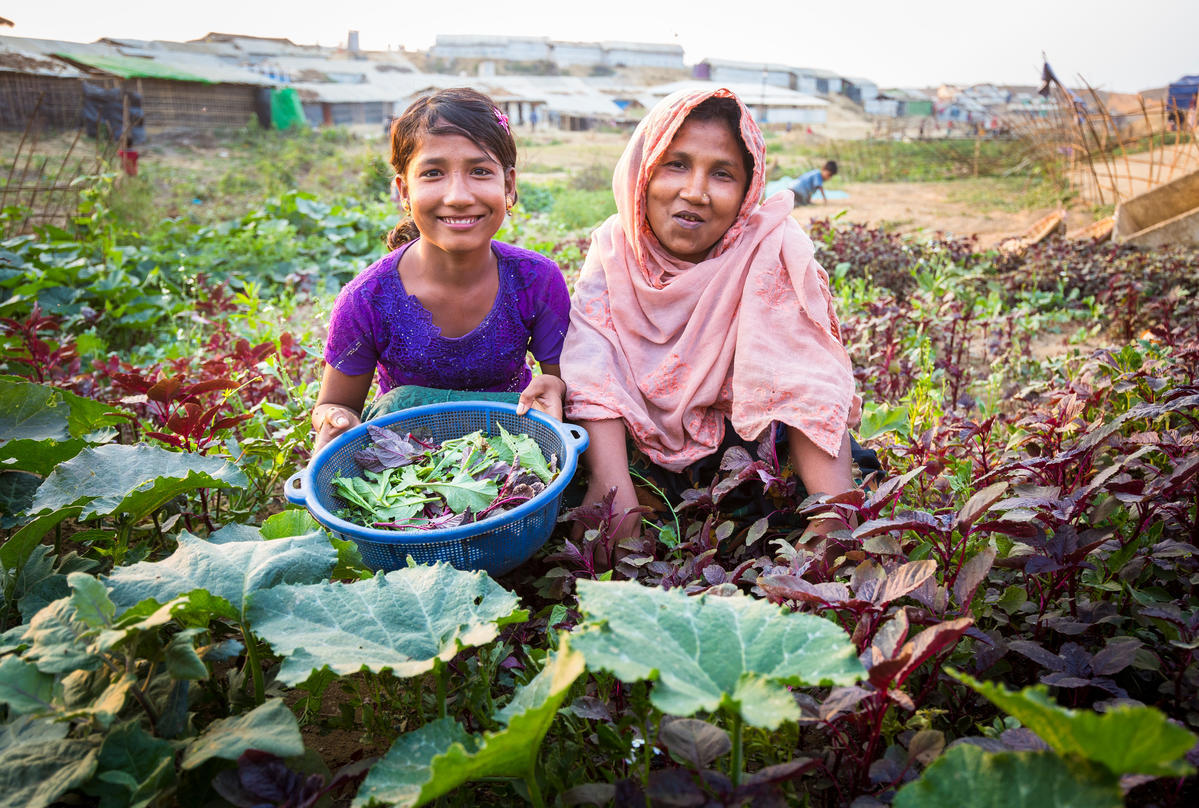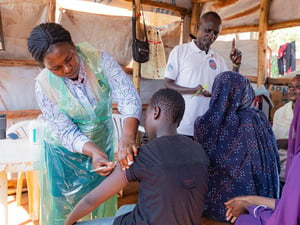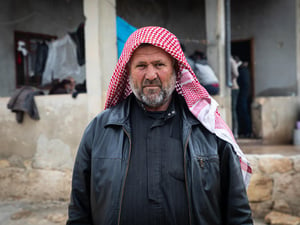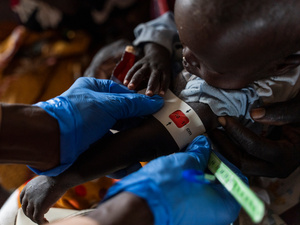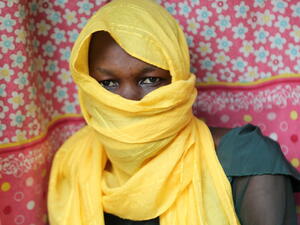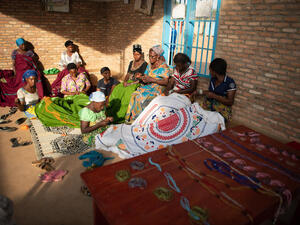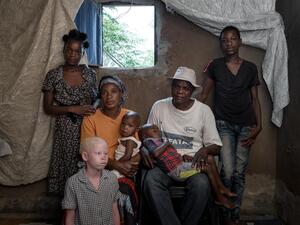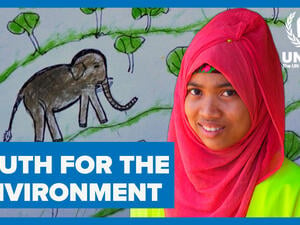UN appeals for US$951 million to support Rohingya refugees in Bangladesh
When they fled Myanmar violence six months ago, Mohammad Islam and his family had nothing to eat and were sleeping in the open lashed by monsoon rains.
Now living in a shack covered by a UNHCR tarpaulin, the 45-year-old Rohingya refugee lists the aid he has received that has transformed a desperate fight for survival into a life for his wife and five children.
“We now have shelter, we eat twice a day, and are free to move around the settlement,” says the former street vendor from the north of Rakhine State, squatting on the cement floor of his home.
Ropes tied to tree roots anchor the tarpaulin on bamboo poles. Around the shack are mats, blankets and mosquito nets, and a solar lantern. He and his wife, Kala Banu, 25, have two rice pots and five plates and utensils.
They are among 2,531 families relocated since late October to a greenfield site in Kutupalong settlement, where the Bangladesh government, supported by UNHCR, the UN Refugee Agency, and its partners have provided a range of materials, facilities and services.
Besides the shelters, built by refugees themselves in informal streets where uprooted communities are able to live together in exile, UNHCR and its partner, the Bangladeshi non-governmental agency BRAC, have provided latrines for men and women, tube wells and solar street lighting.
“The lighting makes me feel a lot safer when I walk to the toilet at night,” says Kala. The facilities are spaced throughout the 87-acre zone of ridges and shallow valleys.
“It saved his life. He recovered.”
When Mohammad’s son Ayatullah, 11, developed a sore throat, swollen glands and a fever, medical staff at a nearby primary health centre, supported by the NGO OBAT Helpers Inc., treated him for suspected diphtheria that has affected more than 5,000 people at the settlement, causing scores of deaths.
“It saved his life. He recovered,” Mohammed says of the youngster, who is among 30 children attending a one-room learning centre a few hundred metres away. Supported by NGOs and the UN Children’s Fund UNICEF, it helps develop literacy, life skills and maths, and has activities including singing.
The 10,128 residents of the zone also have access to information points which advise them on the services that are available. These include UNHCR-supported child-friendly spaces and women’s wellbeing and community centres, which provide activities designed to improve lives.
“I like to sew and I need an income,” says Laila Begum, 25, a single parent who attends a sewing workshop run by BRAC which teaches dozens of women to make fishing nets and prayer caps to sell.
Her husband is detained in Myanmar and Laila cares for their three young children and three orphans, relying on basic food assistance from the World Food Programme. “I want to vary our diet,” she says, “so that we don’t just have rice and lentils to eat.”
The improvement in conditions can be seen everywhere. Some residents now grow food such as squashes, beans and eggplants on empty plots, and even raise chickens.
Child-friendly spaces, counselling and other services ensure that children once silenced by trauma, now play and greet visitors with smiles and laughter.
Life-saving transformations can be seen throughout the vast pop-up city sheltering most of more than 600,000 Rohingya refugees who have fled violence in Myanmar’s Rakhine State since late August.
While huge strides are being made to aid residents in the settlement – divided into more than 20 camps -- the needs of tens of thousands of families living in the world’s largest refugee settlement are vast.
UN agencies, including UNHCR, and their partners launched a joint appeal on Friday for US$951 million to meet the needs of nearly 900,000 Rohingya refugees and more than 330,000 vulnerable Bangladeshis in the communities hosting them.
“The solutions to this crisis lie inside Myanmar.”
The appeal was launched in Geneva by the UN High Commissioner for Refugees, Filippo Grandi, the Director General of the International Organization for Migration, William Swing, and the UN Resident Coordinator in Bangladesh, Mia Seppo.
“We are talking about truly critical needs here both on the part of the Bangladeshi communities who have so generously opened their doors, and of a stateless and refugee population that even prior to this crisis was among the world’s most marginalized and at risk,” Grandi said at the launch.
“The solutions to this crisis lie inside Myanmar, and conditions must be established that will allow refugees to return home. But today we are appealing for help with the immediate needs, and these needs are vast.”
In Kutupalong, more land is urgently needed to expand the settlement and ease overcrowding, which affects everything from public health to safety. As the monsoons threaten flooding and landslides, there is an urgent need to relocate those in areas that are at risk.
Work is under way to open new sectors. Camp 4 may be extended by 123 acres to relieve pressure elsewhere. To make it safe from landslides, slopes are being reduced and roads laid using earthmoving equipment.
The Bangladeshi government has said it will provide 500 acres more land to help relocate some of the most vulnerable families likely to be at risk in the floods and landslides, although it may not be enough to accommodate everyone who needs to move.


